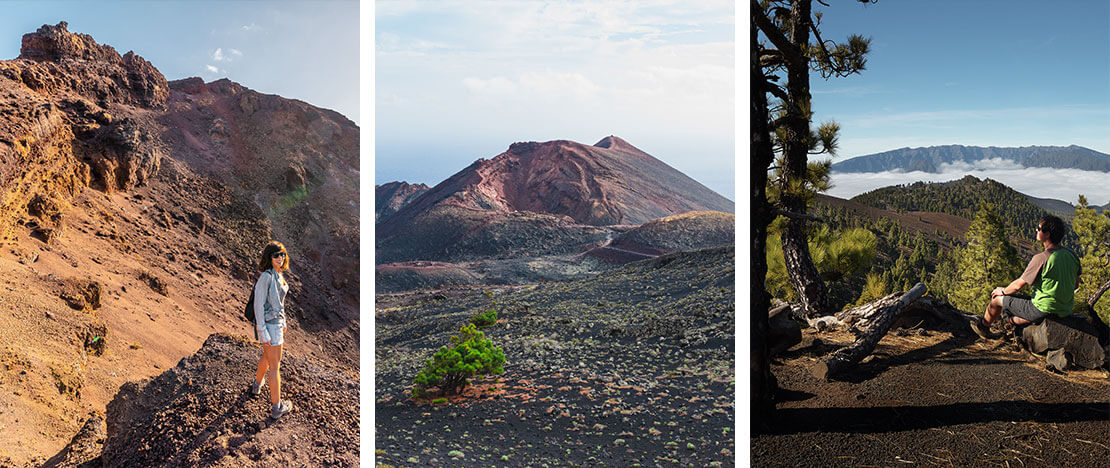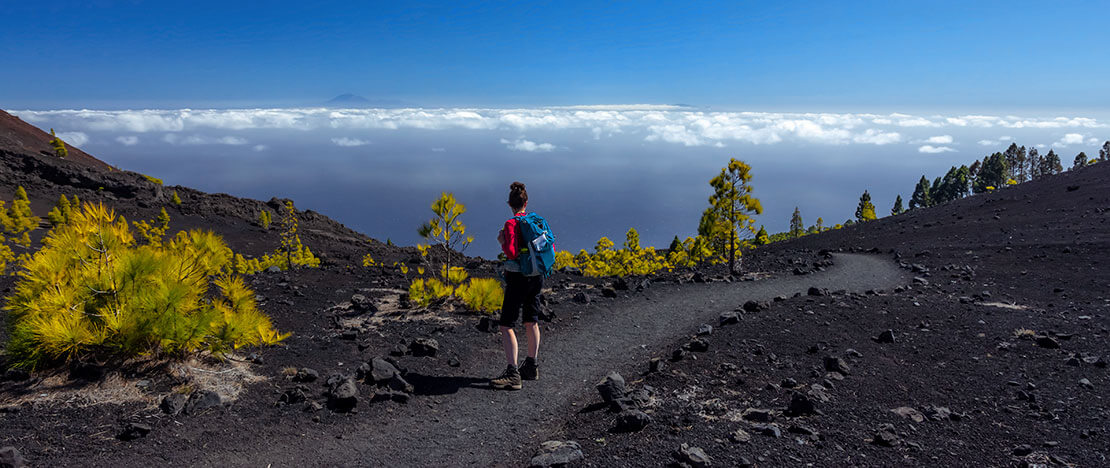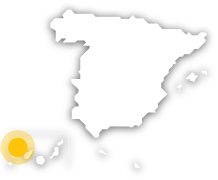Welcome to the Beautiful Island
La Palma, known as the Beautiful Island, really is a paradise for hikers. It boasts magical forests and in the centre, the imposing Taburiente caldera, over eight kilometres in diameter. Although this volcanic island was originally formed by the caldera itself, this trail is designed to show how La Palma has changed with the volcanic eruptions of the last 500 years, most recently in 1971. All along the way, you’ll see the reds and blacks of the volcanoes contrasting with the green pine trees.
A challenging first part with stunning views
The ideal start is at the visitors’ centre at El Pilar, which explains the trail. The path begins in a landscape of Canary Island pines. The first stop is at the Brigoyo viewing point to see the valley of Los Llanos de Aridane and the volcano Mt Bejenado. The views here are breathtaking: Roque de los Muchachos looms over the immense crater of the caldera and the sea of clouds, and in the distance you may be able to see Mt Teide on the island of Tenerife, Spain’s tallest peak.Next, the viewing point at Hoyo Negro was the main epicentre of an eruption in 1949. After that, you come to one of the most iconic volcanoes on the trail: El Duraznero. You can still see the remains of the lake of lava which once flowed from it. Further on is Las Deseadas, at 1,945 metres above sea level the tallest volcano in Cumbre Vieja. Take a moment to enjoy the amazing views from up here –the best anywhere on the trail– and see how nature fights back against the volcanoes, with pines and scrubland recolonising the lava fields and chaotic terrain.

A rest along the way
After this last fairly steep climb you come to Llano Guanches, a plain with a landscape of scrub and pine trees, the perfect place to stop for a snack. This type of flatland was created by a rain of volcanic ash.
"The Transvulcania, one of the world’s toughest ultramarathons at nearly 80 kilometres, follows part of this route."
The landscape starts changing, with the green pines and blue Atlantic becoming more dominant. Now you come to the volcano Martín de Tigalate, created by an eruption in the 17th century which was active for over 80 days.

Journey’s end and a drop of wine
The trail ends in Los Canarios, at the centre of Fuencaliente. Volcanoes once exploded here too, in the 17th and 20th centuries. The first was called San Antonio, and the second, in 1971, was Teneguía. There is a visitor centre with different rooms explaining the events, and offering a walk around the volcano of San Antonio. Two bits of advice: don’t leave Los Canarios without taking a selfie with the monument dedicated to hikers, the “El Caminante” statue, or without tasting the famous Malvasía dessert wine with almonds. It’s a reward for all that hard work!

Extra route
Some hikers may want to go another six kilometres to Fuencaliente lighthouse, next to the famous salt pans of La Palma. If you have energy to burn, this last walk also has fantastic views as you get closer to the sea. After the lighthouse you can go for a swim from a nearby beach, and watch an unforgettable sunset.







